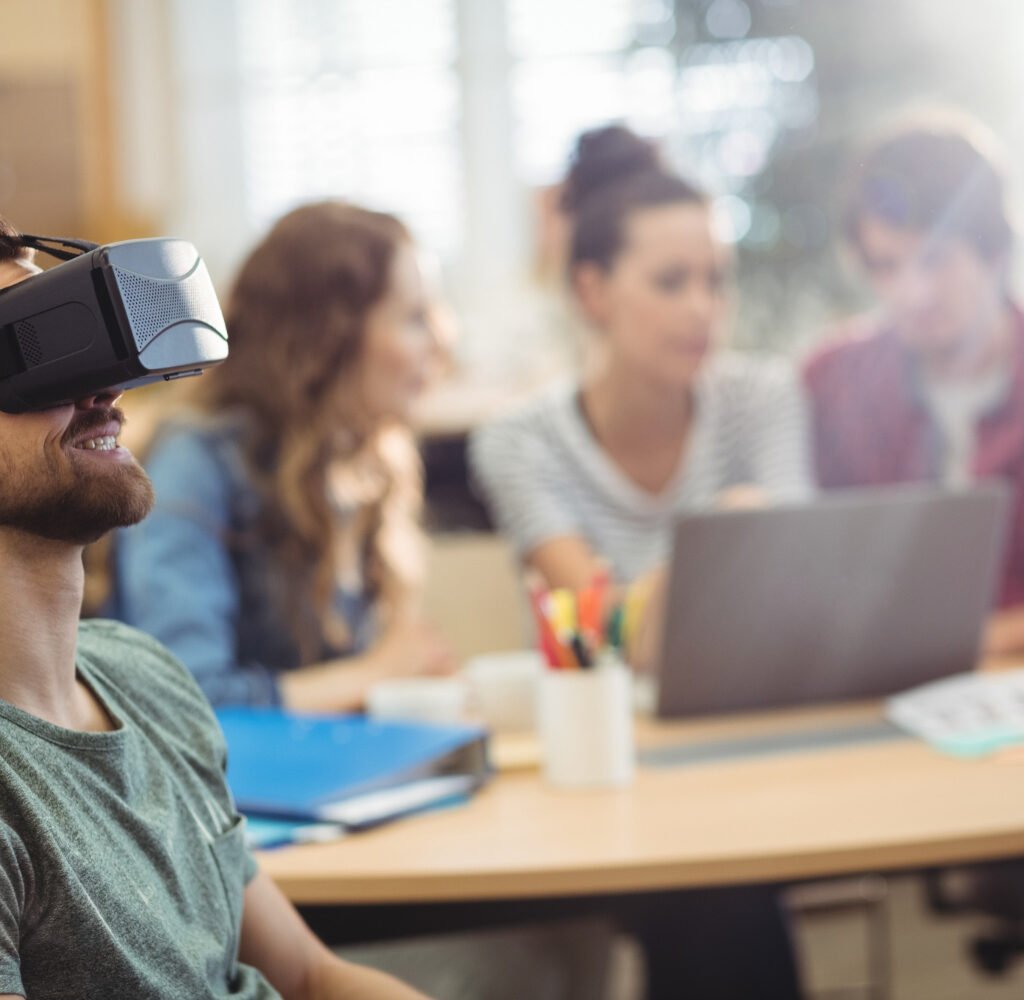In today’s digital age, technology has woven itself into the fabric of our daily lives, transforming various sectors, especially education. With tech innovations, how students learn and teachers instruct has taken a quantum leap. From interactive learning tools to vast online resources, technology makes education more engaging, accessible, and effective. Let’s dive into seven ways technology is transforming educational learning.
Interactive Learning Tools
Remember when classrooms had chalkboards and textbooks? Those days are evolving with the advent of smartboards, educational apps, and interactive software. These tools transform lessons into immersive experiences, making learning more engaging and enjoyable. Imagine virtually conducting a science experiment or solving math problems through an educational game. Interactive tools encourage active participation, turning even the most challenging subjects into fun, manageable tasks.
So, you can see how interactive tools are not simply making learning more interesting. They are versatile resources that cater to drastically different learning styles. Visual learners can benefit from videos and animations. On the other hand, kinesthetic learners can engage with interactive games and problem-solving simulations.
All these resources provide immediate feedback, helping students understand their mistakes and learn from them in real time.
Personalized Learning Experiences
Not all students learn at the same pace or have the same strengths. Technology allows for personalized learning experiences tailored to individual needs. Adaptive learning software customizes lessons based on each student’s progress. If you’re struggling with fractions but excel at geometry, the software adjusts to give you more practice where you need it and less where you don’t. Teachers can also use these insights to provide targeted help and use editing techniques to completely adapt the subjects making sure no student is left behind.
Personalized learning platforms can analyze a student’s performance and suggest areas for improvement, ensuring a more focused learning experience. This individualized approach helps in keeping students motivated and engaged, as they work on skills that are specifically relevant to their learning journey.
Access to Online Learning Resources
Gone are the days when you had to go to a library for research. Now, a world of information is just a click away. Online learning resources like Khan Academy, Coursera, and edX offer courses from top universities around the globe. You can learn anything from coding to sharing stories, all from the comfort of your home. Also, you find a bunch of notes made by students and designed specifically to quickly master certain subjects. For instance, the useful University of Otago notes are amongst the most notable examples.
This bunch also covers the interactive elements such as quizzes and forums where learners can discuss topics and get feedback from peers and instructors. This interactivity helps in deepening the understanding of the subject matter and summons up an inclusive community-like feel.

Enhanced Communication and Collaboration
Communication between students, teachers, and parents has never been easier, thanks to technology. Platforms like Google Classroom and Moodle allow for seamless sharing of resources, assignment submissions, and real-time feedback. Video conferencing tools such as Zoom and Microsoft Teams enable virtual classrooms and parent-teacher meetings. Students can collaborate on projects, share ideas, and work together effortlessly, whether they’re sitting next to each other or miles apart.
Enhanced communication tools ensure that learning extends beyond the classroom. Teachers can provide immediate feedback on assignments, which helps students improve their work and understand concepts more clearly.
Virtual and Augmented Reality
Virtual Reality (VR) and Augmented Reality (AR) are not just for gaming; they’re revolutionizing education too! VR lets students explore ancient civilizations, walk through the solar system, or dive into the ocean without leaving the classroom. AR, meanwhile, enhances real-world experiences by adding interactive digital elements. For instance, imagine pointing your tablet at a map and seeing historical events unfold in 3D. These technologies make learning more tangible and exciting, helping students to better understand and remember complex concepts.
VR and AR provide experiential learning opportunities, which are crucial for subjects that require visualization of concepts. For example, medical students can practice surgeries in a virtual environment, and history students can witness historical events as if they were there.

Improved Access for Special Needs Students
Technology is a game-changer for students with special needs, making education more inclusive. Assistive technologies like speech-to-text software, screen readers, and specialized communication devices break down barriers to learning. For example, visually impaired students can use screen readers to access digital content, while those with speech impairments can use communication boards to express themselves. These tools empower all students to learn, participate, and succeed in their educational journeys.
Assistive technologies also enable personalized learning for students with disabilities, catering to their specific needs and helping them achieve their full potential. For instance, dyslexic students can benefit from text-to-speech software, which reads out text and helps them follow along.
Conclusion
Well, we hope you have enjoyed this short list of neat ways modern tech is transforming learning and education and helps us acquire knowledge in a manner that is more engaging, streamlined and even fun. And as time goes by, our ability to constantly and quickly learn new things is only going to become more important. We are living in a rapidly developing world where what you know will no longer be as important as how able you are to expand your horizons and skill sets. The latest-gen tech proves to be an incredibly valuable resource in this struggle. So, why not put it to some good use?
